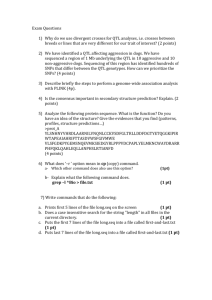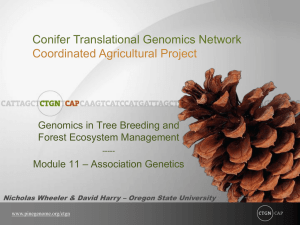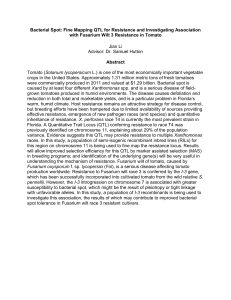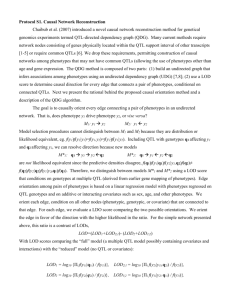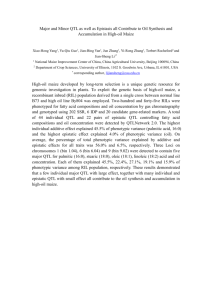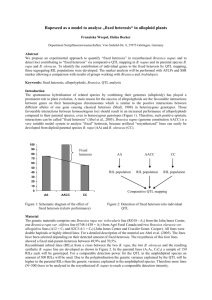RTQ_story - Tomato phenotypes in a common genetic
advertisement
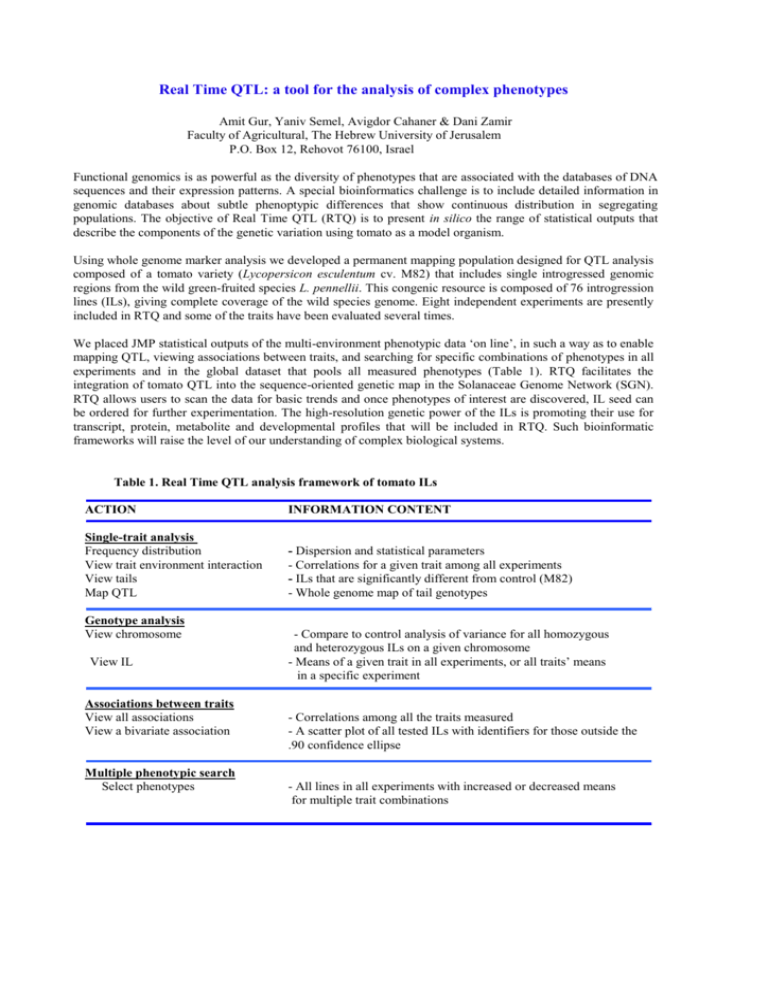
Real Time QTL: a tool for the analysis of complex phenotypes Amit Gur, Yaniv Semel, Avigdor Cahaner & Dani Zamir Faculty of Agricultural, The Hebrew University of Jerusalem P.O. Box 12, Rehovot 76100, Israel Functional genomics is as powerful as the diversity of phenotypes that are associated with the databases of DNA sequences and their expression patterns. A special bioinformatics challenge is to include detailed information in genomic databases about subtle phenoptypic differences that show continuous distribution in segregating populations. The objective of Real Time QTL (RTQ) is to present in silico the range of statistical outputs that describe the components of the genetic variation using tomato as a model organism. Using whole genome marker analysis we developed a permanent mapping population designed for QTL analysis composed of a tomato variety (Lycopersicon esculentum cv. M82) that includes single introgressed genomic regions from the wild green-fruited species L. pennellii. This congenic resource is composed of 76 introgression lines (ILs), giving complete coverage of the wild species genome. Eight independent experiments are presently included in RTQ and some of the traits have been evaluated several times. We placed JMP statistical outputs of the multi-environment phenotypic data ‘on line’, in such a way as to enable mapping QTL, viewing associations between traits, and searching for specific combinations of phenotypes in all experiments and in the global dataset that pools all measured phenotypes (Table 1). RTQ facilitates the integration of tomato QTL into the sequence-oriented genetic map in the Solanaceae Genome Network (SGN). RTQ allows users to scan the data for basic trends and once phenotypes of interest are discovered, IL seed can be ordered for further experimentation. The high-resolution genetic power of the ILs is promoting their use for transcript, protein, metabolite and developmental profiles that will be included in RTQ. Such bioinformatic frameworks will raise the level of our understanding of complex biological systems. Table 1. Real Time QTL analysis framework of tomato ILs ACTION INFORMATION CONTENT Single-trait analysis Frequency distribution View trait environment interaction View tails Map QTL - Dispersion and statistical parameters - Correlations for a given trait among all experiments - ILs that are significantly different from control (M82) - Whole genome map of tail genotypes Genotype analysis View chromosome View IL Associations between traits View all associations View a bivariate association Multiple phenotypic search Select phenotypes - Compare to control analysis of variance for all homozygous and heterozygous ILs on a given chromosome - Means of a given trait in all experiments, or all traits’ means in a specific experiment - Correlations among all the traits measured - A scatter plot of all tested ILs with identifiers for those outside the .90 confidence ellipse - All lines in all experiments with increased or decreased means for multiple trait combinations
